Analyzing an image before retouching is a crucial element to achieving a beautiful and natural result. You can learn all the techniques in the world, but if you don’t know what to retouch, applying those long hours of training may prove complicated. Thanks to Capture One 11 and the brand-new Annotations tools, this whole process can be made easy and visual to help you streamline your workflow and communicate better.
Why use annotations?
Annotations are fantastic for many reasons and different people. From the photographer to the retoucher, or the makeup artist and artistic director, everyone has a say when working on set. The photographer may ask the retoucher for a specific color grading, the makeup artist may notice something that will need some retouching later, or the artistic director may require a new crop to satisfy the client’s needs. Whatever it is, up until now you probably had to open up a text file and take notes of what had to be done on which image. Thanks to the new Annotations feature in Capture One 11, you can now add anything directly on your image without leaving your preferred photo editing software and without altering the image quality either.
If you are working on your own and not with a team, relying on annotations may still be beneficial to your work. Have you ever found yourself editing your image but looking for what to do next? We’ve all been there. Analyzing the issues and how to make your picture visually stronger is a crucial part of the job. It’s one way to cut your retouching time dramatically and learn to stop going too far. Take it as a retouching meditation, slow down first to then be more efficient.
Graphic tablets for better results
Adding annotations is straightforward. You simply use the Annotations brush tool and draw on your image. That’s it! You may not be the best painter, but it doesn’t matter: the goal is to make your annotations explicit enough for the person who will read them later on, be it your retoucher, client, or yourself.
You can rely on your trusty trackpad or mouse to make new annotations, but if you own a Wacom or any other graphics tablet, you’ll be better off using that as it’s easier to draw accurately and clearly. And, if you don’t have one, it may be a good excuse to treat yourself and bring your retouching to the next level!
Colors to keep things clear
By now, it should be clear why Annotations is so useful and how Capture One Pro 11 makes it easy for you to annotate your images. However, you can go one step further and use different colors. I’d even say that you really should use different colors to create annotations that are as useful as possible.
There are different color codes out there when it comes to image and art annotations. Some people use the GSCE Art annotation format, while others like to use the color order to then match it with layer colors in Photoshop (texture, luminosity, color, for example), and I’m sure there are tons of other styles of annotations out there. The most important thing is to make clear as to what color means what. Don’t circle in blue the texture issues in one session, and then use blue for color problems in another one. You’ll end up lost. Define your standard, make it clear to the people you’re working with, and base your workflow on that.
Bringing the information into Photoshop
One last thing before you go to Capture One and try this fantastic Annotations feature. When processing your files using the Processing Recipes, under the metadata tab, you’ll find new options. One of which is designed to export your Capture One annotations as a new layer in your PSD file. It’s extremely handy if you want to keep your whole retouching workflow based on your initial annotations and not have to redo the work in Photoshop. It’s also fantastic if you give your retoucher PSD files instead of RAW files. There they’ll have all the info they need to retouch your image within the file, and you won’t have to write numerous paragraphs in a long email to explain what you want.
… And before I leave you with the free 30-day trial, here’s a page where you can see how to use the Annotations feature in Capture One 11 as well as all the other new features available – go to Capture One Tutorials.
Quentin Décaillet
Quentin Décaillet is a product and beauty photographer based in Switzerland. His endless curiosity and hunger for learning new things have led Quentin to create a unique paradoxical visual style. Bold, contrasty, and vivid, his imagery is a combination of his deep passion for art and technology. When Quentin is not working on a project, you’ll most likely find him trying new techniques to push his art further.
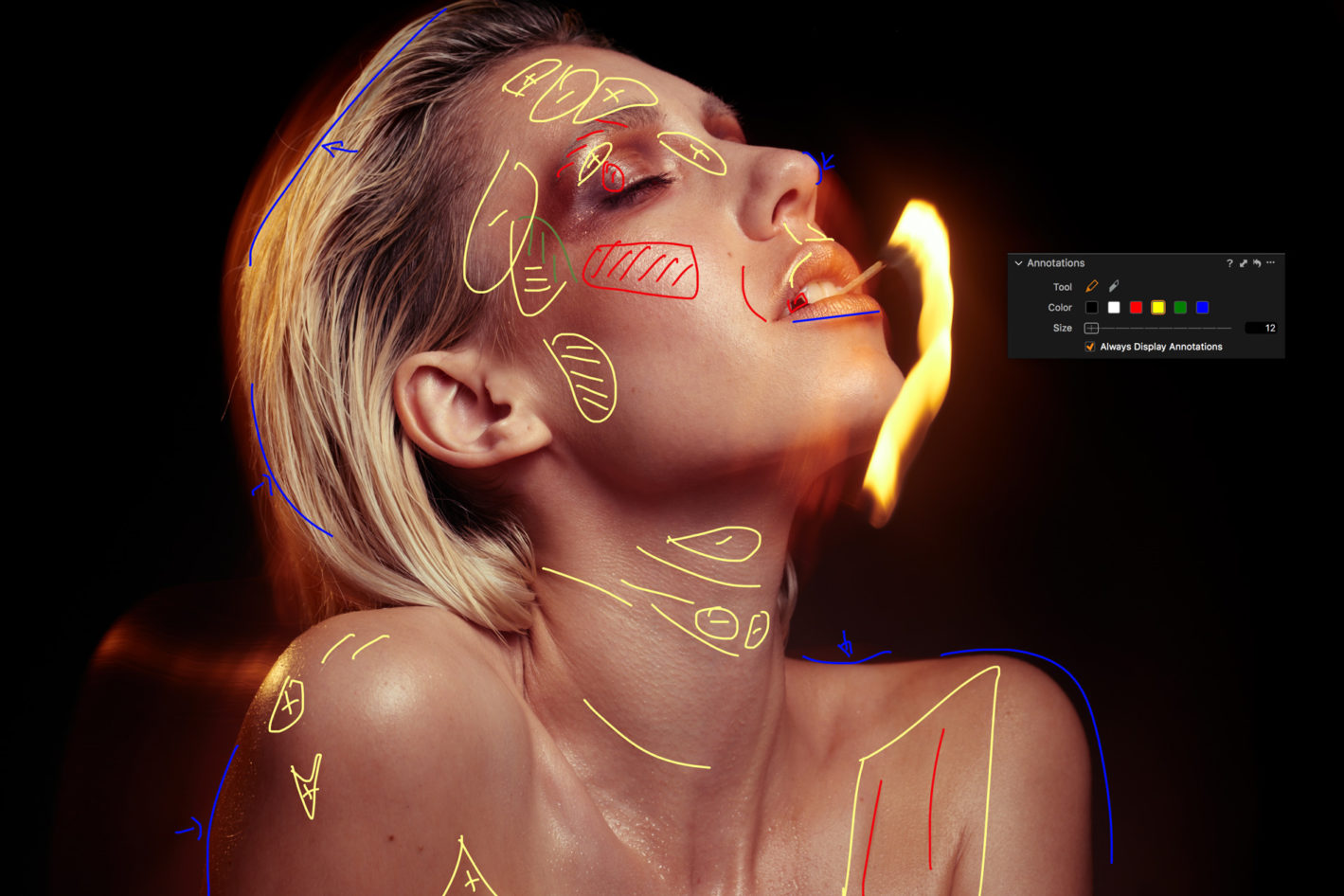
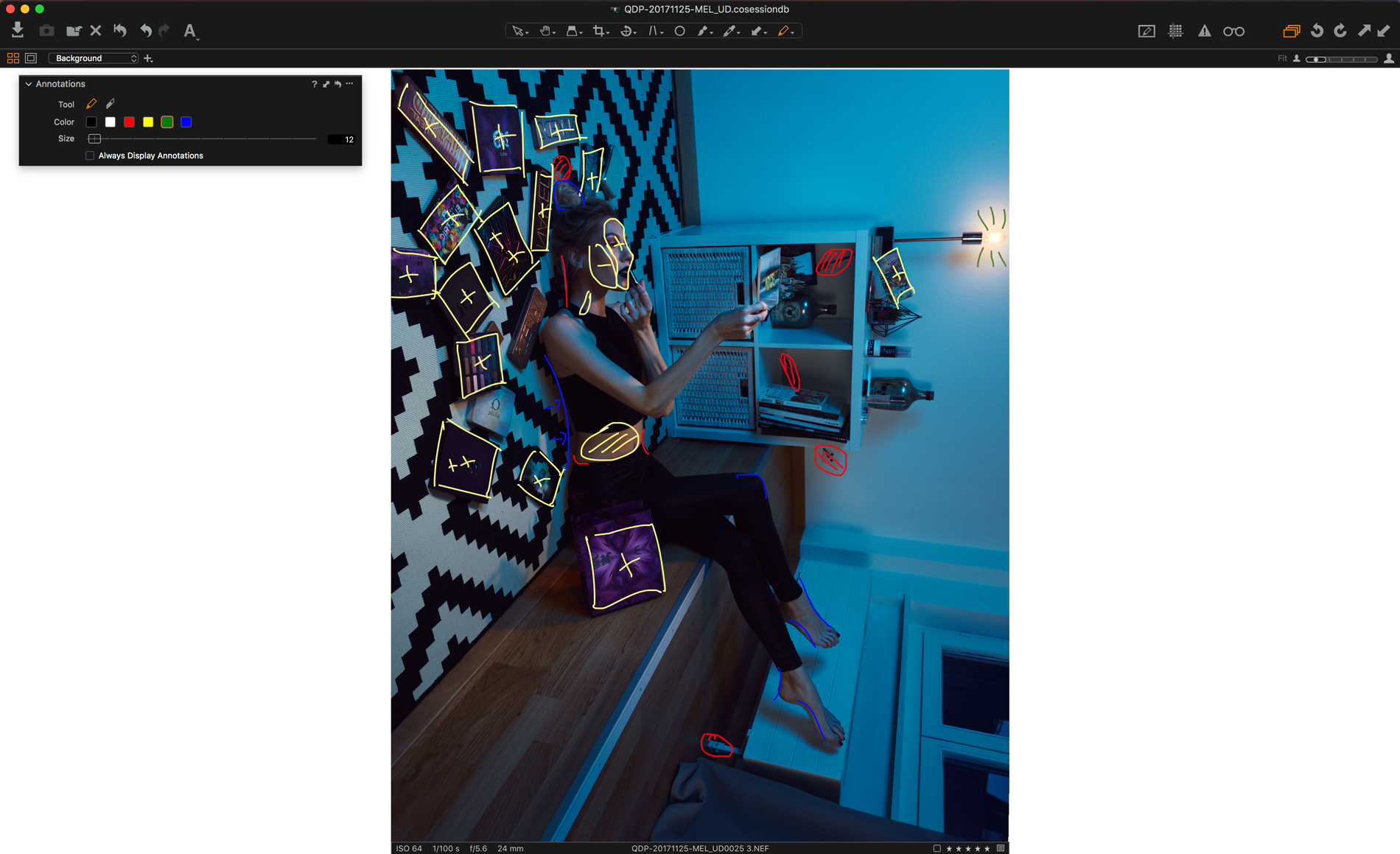
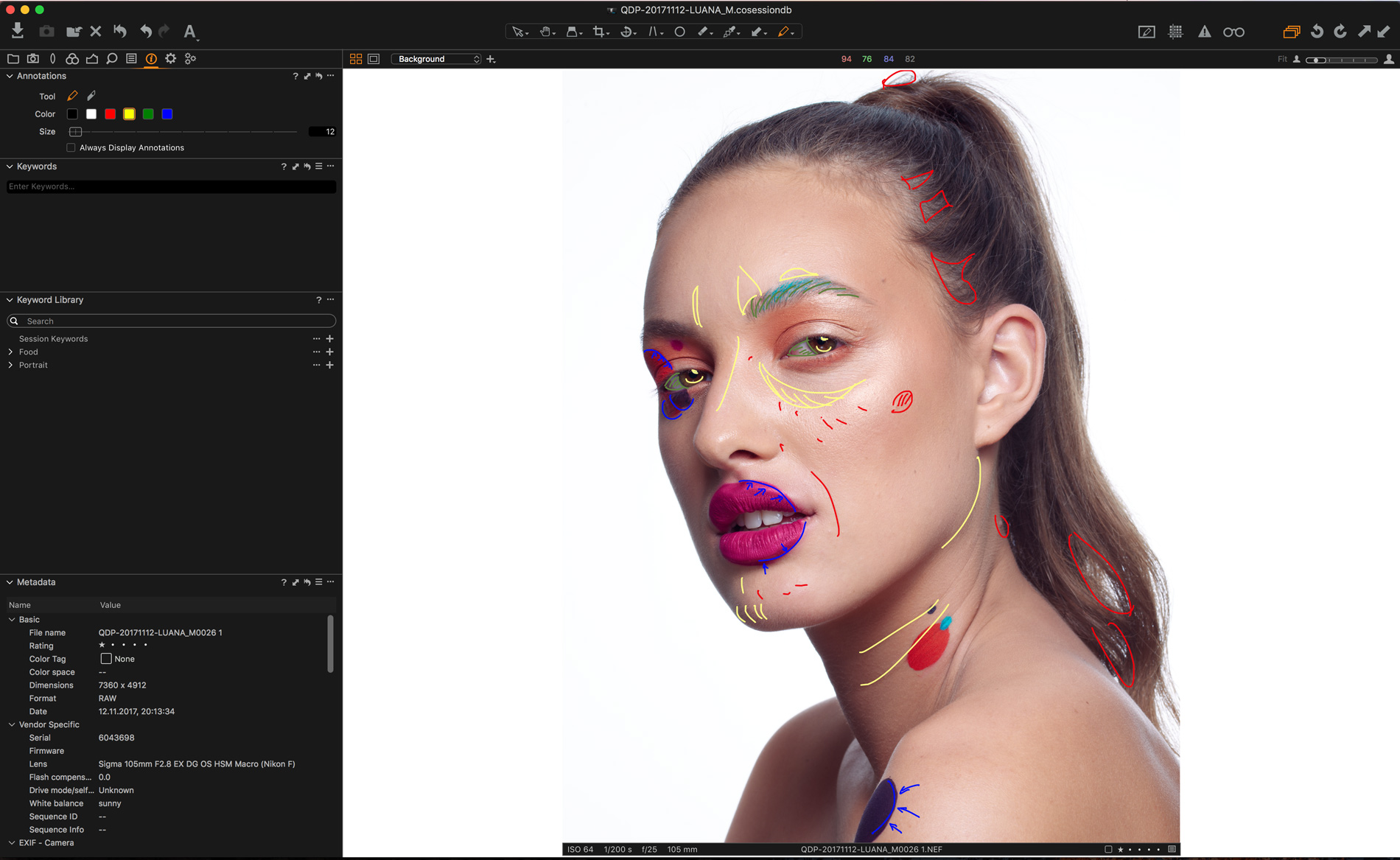
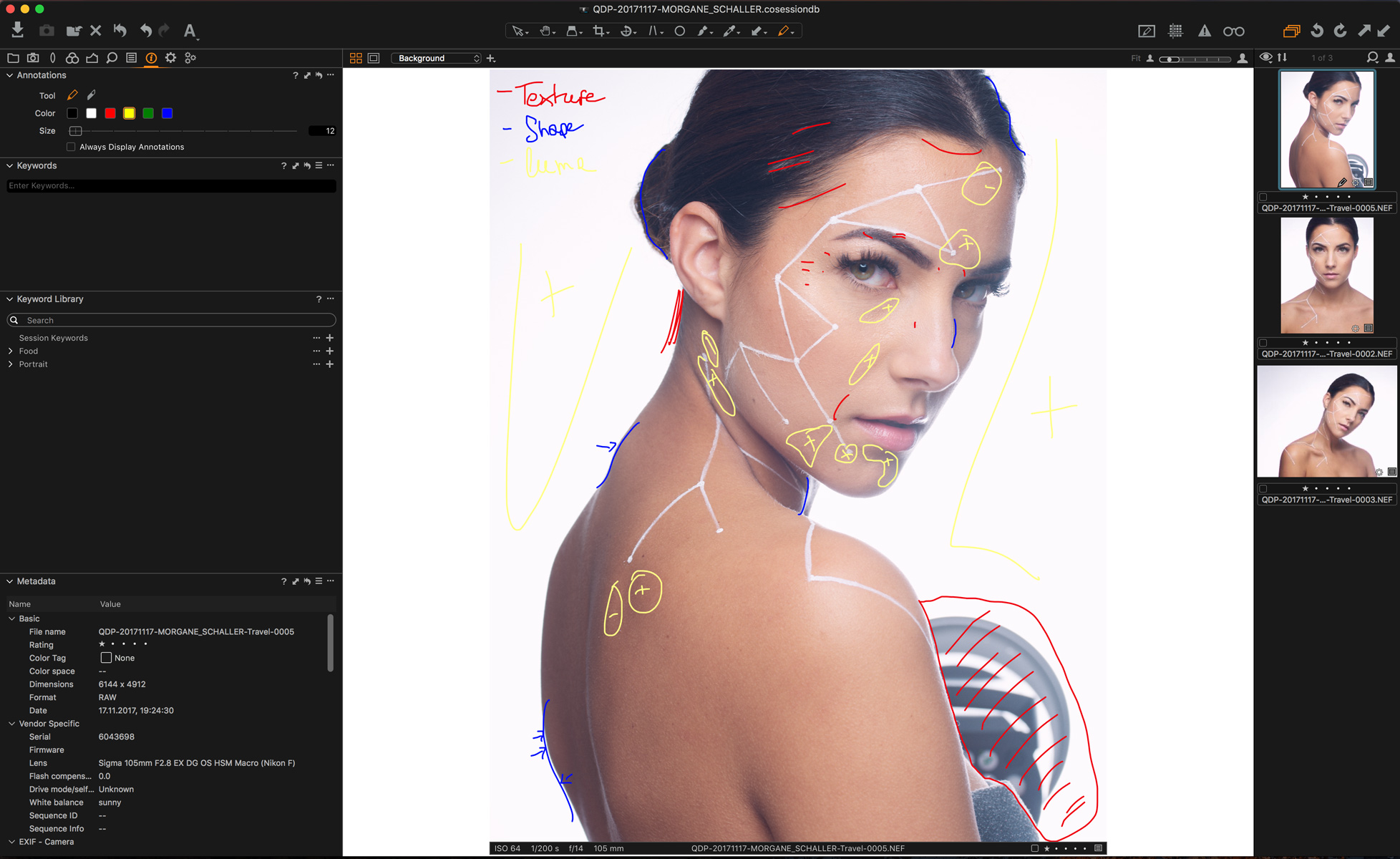
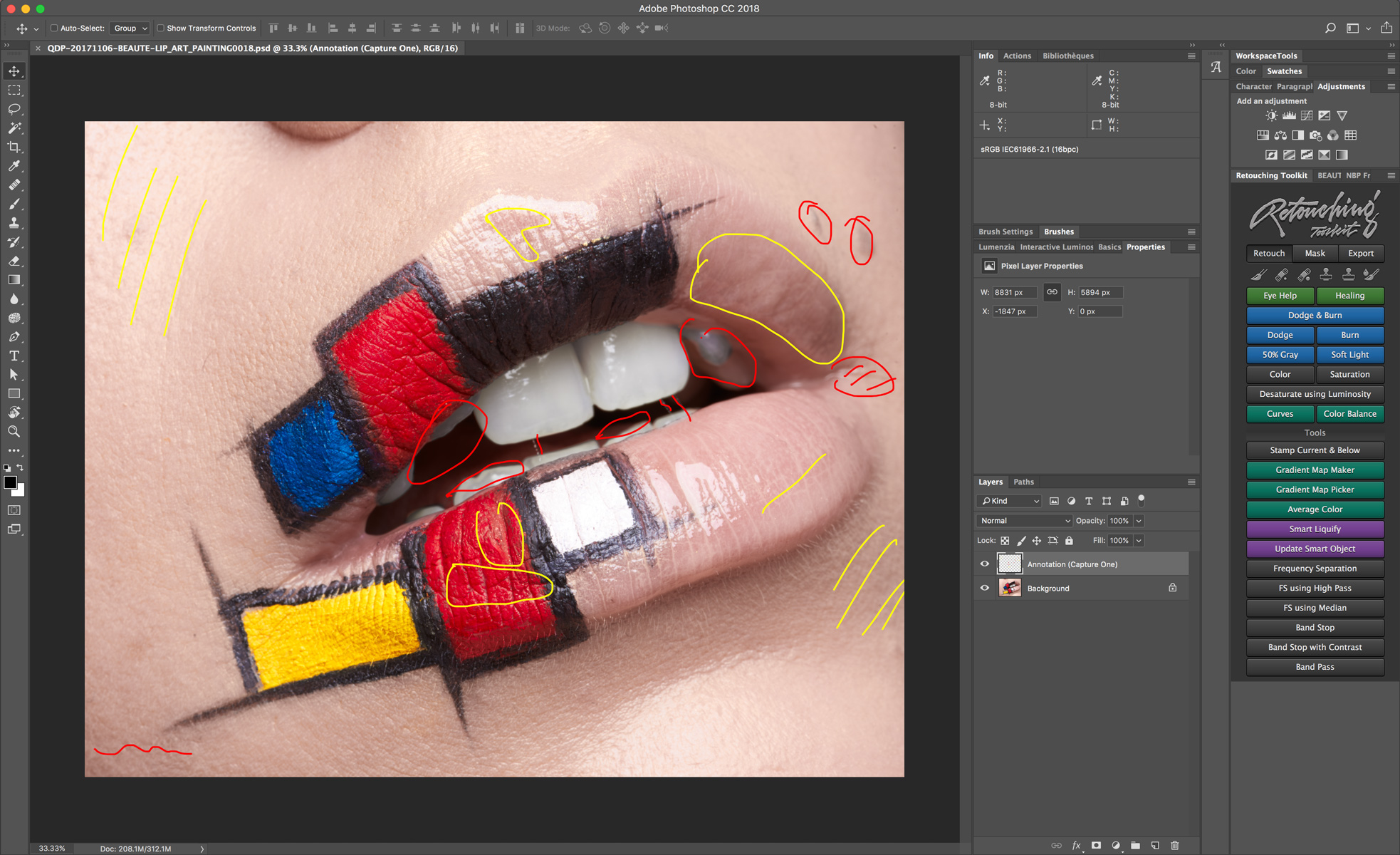
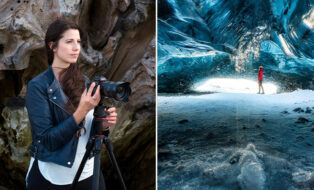


The ability to type instructions in Annotations would greatly help ease to communicate. This would negate the need to use a graphic tablet.
Is there a way to hide the annotations (toggel their visibility) while working?
I agree with Noel Salamero. I can’t even believe this is not an option!
I work with a laptop and trying to hand write annotation notes on the touch pad is crazy!!
Can I use keyboard to write them??? It’s very annoying using touchpad 😀
Hi Jacob,
Currently Annotations is a draw-only feature. Inputting text would indeed be helpful in many workflows!
– Alex
What about enable annotations on capture pilot for iPad? Would be great make them with the Apple Pencil?